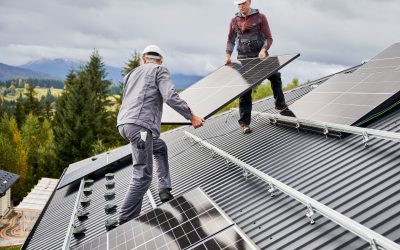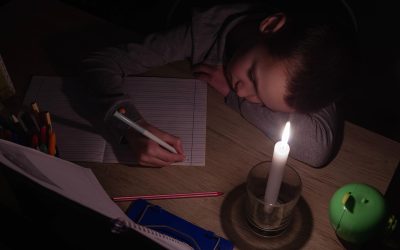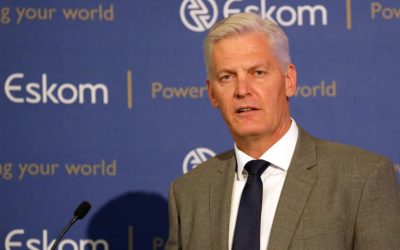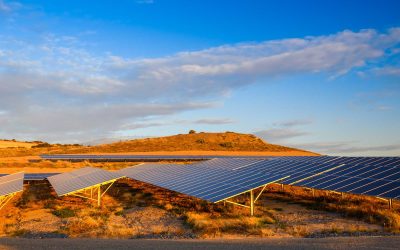I’d like to talk a little bit about the energy situation in Europe. Because of the war between Russia and Ukraine, the supply of gas from Russia to Europe has been cut off. This has caused Europeans to start up their old coal-fired power stations and the world is calling the Europeans hypocrites for preaching renewables, and they’re saying that this demonstrates that renewable energy does not work on a large scale. Let’s look at this.
The Demand Curve
The electricity demand of a country changes hour by hour, minute by minute. We call it the demand curve. It’s partly predictable and partly unpredictable. It’s partly predictable because there is a minimum amount of power that the country will always need, 24 hours a day, 7 days a week, 365 days of the year. Except under very special circumstances, like earth day where the demand drops drastically, the power demand has a certain minimum that it will not go below.
The demand curve is partly unpredictable because above this minimum demand, just about anything can happen. Of course, there is a morning peak, an evening peak, and a working hours load, and one can more-or-less predict what it might look like. But, for the most part, it’s really unpredictable what the demand curve will look like minute by minute above the minimum demand.
System operators have to constantly match the demand with the supply. Historically, we’ve done this with three types of power. Firstly, there is baseload power that supplies that minimum demand. This is power that is just about constantly online and ensures that the minimum demand is always catered for. Secondly, there is what we call mid-merit power. This is power that ramps up and down throughout the day to more-or-less match those predictable ups and downs of the demand curve throughout the day. Lastly, we have peaking power. This power ramps and down very quickly to match the unpredictable peaks throughout the day and those slight mismatches between the demand and the supply.
Baseload Power
The main issue that people always bring up with renewable, specifically wind and solar, is that it doesn’t provide baseload power. Renewable energy in the form of wind and solar is what is called variable generation. It’s variable because the power that you can generate changes hour by hour, even minute by minute, based on the availability of wind and sunshine. Since the sun doesn’t always shine at the same intensity, and is gone at night, and since the wind doesn’t always blow at the same speed, these technologies, the argument goes, cannot provide baseload power, and so they are not suitable to meet the energy demand of the country.
The Case for Renewables
Why would a country move towards renewables in the first place? Well, aside from the environmental benefits, there is a major cost benefit. In 2016, the CSIR did a study to determine what the cheapest energy system for South Africa would look like. CSIR determined that we could save the country R 90 billion per year (that’s around $5.5 billion USD) in energy costs if we increased our wind and solar production and built no more coal and nuclear plants. R 90 billion per year!
What would such a system look like? Well, in order to run the country on mostly wind and solar, we would need to throw away our old way of thinking about baseload, mid-merit, and peaking power. Secondly, we need to understand, that although solar and wind are variable, they are actually incredibly predictable given the advancements in weather monitoring equipment. Thirdly, if solar and wind power plants are spread throughout the country, and we have reliable equipment for predicting their availability, we can actually have a stable power supply that can meet most of our energy requirements.
Flexible Generation
I say “most” because the studies show that there are instances when the supply from wind and solar spread throughout the country would not be able to meet our demand. For this we need something called flexible generation. So, our variable renewables needs to be complemented with flexible generation. Flexible generation is generation technology that can quickly ramp up and down to match the gaps between the renewables supply and the electricity demand. Flexible generation tends to be far more expensive than most other generation technologies in terms of the price per unit of electricity. However, it’s used very little, in short spurts. So, even with the higher price, it still works out to R 90 billion per year cheaper to have solar, wind, and flexible generation, than to build more coal and nuclear plants for baseload power.
What are some of the forms of flexible generation? There are renewable forms of flexible generation such as concentrating solar power and biogas. There is also energy storage, such as batteries, hydrogen, and pumped storage. And then there are non-renewable forms of flexible generation such as gas turbines powered by natural gas. Currently, the cheapest of all of these flexible generation technologies happens to be gas. The other technologies are viable, but gas is the cheapest. If we combine solar and wind with gas, we have a good mix of variable generation and flexible generation to provide the least cost solution for our energy system.
The Lessons from Europe
The least cost solution doesn’t necessarily provide the most reliable solution. In South Africa, solar and wind are reliable and predictable. The one thing that is not reliable in this scenario is the source of the gas to power the gas turbines. This takes us back to Europe. The reason this scenario did not work in Europe is that the reliability of the gas supply was dependent on peace with Russia. Since that is gone, the gas supply is gone, and Europe is without flexible generation technology to complement the variable wind and solar.
The problem here is not the wind and solar. The problem is the availability of flexible generation. Since there are many options for flexible generation, it just requires a bit more thinking about the reliability of supply, rather than pure cost, when it comes to choosing a source. It might have been more prudent to choose another source, such as CSP, which may not have been the cheapest but would have reduced the risk to the system.
In South Africa, we can learn from this. The lesson is not that renewables don’t work. They do. The lesson is that we need to be strategic in our choice of flexible generation capacity. Our solar and wind resources are some of the best in the world, and it’s very reliable. When we choose flexible generation, however, we should have a mix of flexible generation technologies. This mix might include the cheapest technology, gas, but it might also include more expensive technologies such as CSP and battery storage. Again, since the flexible generation is not used constantly, it would still be cheaper to go this route than to build more coal and nuclear.













